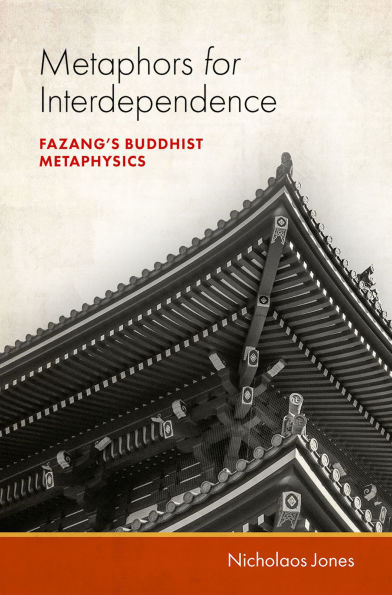Fazang (643-712), third patriarch of the Huayan tradition of Buddhism, was one of the most celebrated and influential thinkers in the history of Chinese Buddhist philosophy. Much of his renown derives from his efforts to articulate a vision of reality as a realm of thoroughgoing interdependence. For Fazang, the smallest grain of sand contains the largest mountain, and even the most distant star is inseparable from the lowliest of insects. In Metaphors for Interdependence, Nicholaos Jones develops a rigorous and accessible examination of Fazang's metaphysical vision. The first part of the book explains Fazang's conceptual framework and the precise language he uses to articulate his vision. The explanations show how Fazang's terminology derives from, and sometimes departs from, contributions by influential predecessors in Indian and Chinese traditions of Buddhism. The explanations also use engaging examples to illustrate Fazang's more difficult concepts. The second part of the book develops incisive interpretations for Fazang's metaphors of Indra's net, counting coins, and the integrated building. The interpretations show how each metaphor illustrates an aspect of Fazang's metaphysical vision and how each relates to similar metaphors in prior Buddhist writings. The interpretations also reveal intriguing and hitherto unexplored connections between Fazang's metaphors and Buddhist approaches to optical theory, breathing meditation, and architecture. Taken together, Jones's explanations and interpretations demonstrate the coherence and attraction of Fazang's vision, challenge facile conceptions of interdependence, and invite readers to reconsider a range of common metaphysical assumptions.
1146577634
Metaphors for Interdependence: Fazang's Buddhist Metaphysics
Fazang (643-712), third patriarch of the Huayan tradition of Buddhism, was one of the most celebrated and influential thinkers in the history of Chinese Buddhist philosophy. Much of his renown derives from his efforts to articulate a vision of reality as a realm of thoroughgoing interdependence. For Fazang, the smallest grain of sand contains the largest mountain, and even the most distant star is inseparable from the lowliest of insects. In Metaphors for Interdependence, Nicholaos Jones develops a rigorous and accessible examination of Fazang's metaphysical vision. The first part of the book explains Fazang's conceptual framework and the precise language he uses to articulate his vision. The explanations show how Fazang's terminology derives from, and sometimes departs from, contributions by influential predecessors in Indian and Chinese traditions of Buddhism. The explanations also use engaging examples to illustrate Fazang's more difficult concepts. The second part of the book develops incisive interpretations for Fazang's metaphors of Indra's net, counting coins, and the integrated building. The interpretations show how each metaphor illustrates an aspect of Fazang's metaphysical vision and how each relates to similar metaphors in prior Buddhist writings. The interpretations also reveal intriguing and hitherto unexplored connections between Fazang's metaphors and Buddhist approaches to optical theory, breathing meditation, and architecture. Taken together, Jones's explanations and interpretations demonstrate the coherence and attraction of Fazang's vision, challenge facile conceptions of interdependence, and invite readers to reconsider a range of common metaphysical assumptions.
88.99
In Stock
5
1

Metaphors for Interdependence: Fazang's Buddhist Metaphysics
288
Metaphors for Interdependence: Fazang's Buddhist Metaphysics
288Related collections and offers
88.99
In Stock

Product Details
| ISBN-13: | 9780197807217 |
|---|---|
| Publisher: | Oxford University Press |
| Publication date: | 12/18/2020 |
| Sold by: | Barnes & Noble |
| Format: | eBook |
| Pages: | 288 |
| File size: | 2 MB |
About the Author
From the B&N Reads Blog
